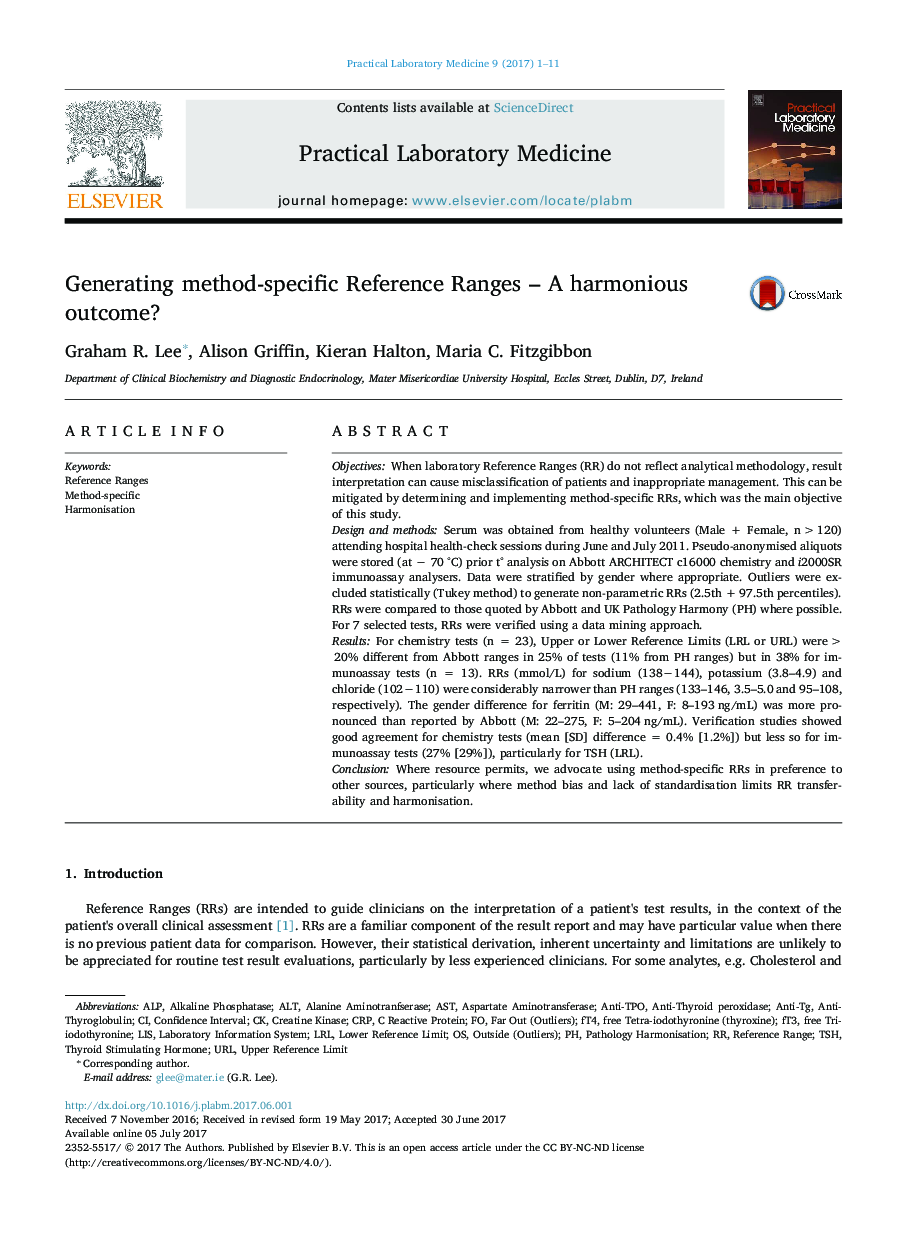| Article ID | Journal | Published Year | Pages | File Type |
|---|---|---|---|---|
| 5584785 | Practical Laboratory Medicine | 2017 | 11 Pages |
ObjectivesWhen laboratory Reference Ranges (RR) do not reflect analytical methodology, result interpretation can cause misclassification of patients and inappropriate management. This can be mitigated by determining and implementing method-specific RRs, which was the main objective of this study.Design and methodsSerum was obtained from healthy volunteers (Male + Female, n > 120) attending hospital health-check sessions during June and July 2011. Pseudo-anonymised aliquots were stored (at â 70 °C) prior t° analysis on Abbott ARCHITECT c16000 chemistry and i2000SR immunoassay analysers. Data were stratified by gender where appropriate. Outliers were excluded statistically (Tukey method) to generate non-parametric RRs (2.5th + 97.5th percentiles). RRs were compared to those quoted by Abbott and UK Pathology Harmony (PH) where possible. For 7 selected tests, RRs were verified using a data mining approach.ResultsFor chemistry tests (n = 23), Upper or Lower Reference Limits (LRL or URL) were > 20% different from Abbott ranges in 25% of tests (11% from PH ranges) but in 38% for immunoassay tests (n = 13). RRs (mmol/L) for sodium (138â144), potassium (3.8-4.9) and chloride (102â110) were considerably narrower than PH ranges (133-146, 3.5-5.0 and 95-108, respectively). The gender difference for ferritin (M: 29-441, F: 8-193 ng/mL) was more pronounced than reported by Abbott (M: 22-275, F: 5-204 ng/mL). Verification studies showed good agreement for chemistry tests (mean [SD] difference = 0.4% [1.2%]) but less so for immunoassay tests (27% [29%]), particularly for TSH (LRL).ConclusionWhere resource permits, we advocate using method-specific RRs in preference to other sources, particularly where method bias and lack of standardisation limits RR transferability and harmonisation.
